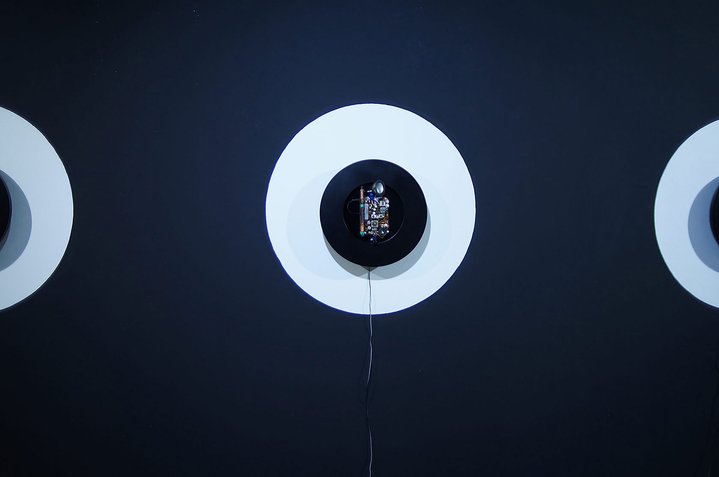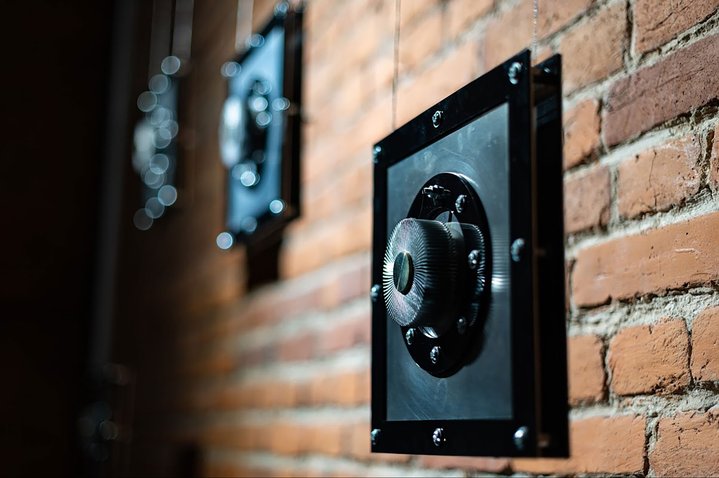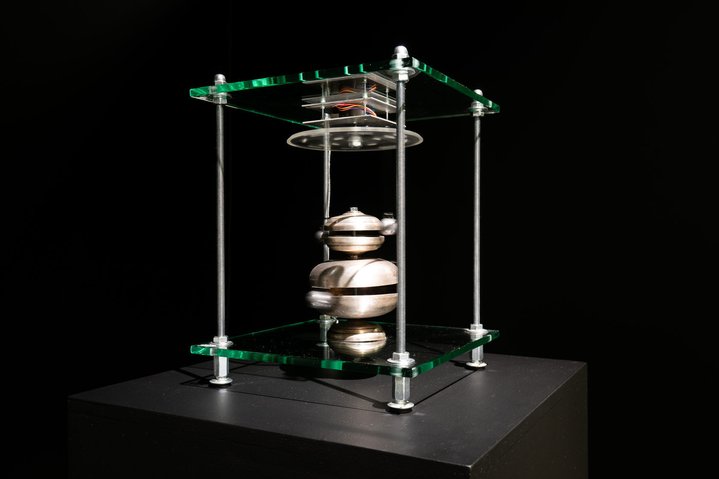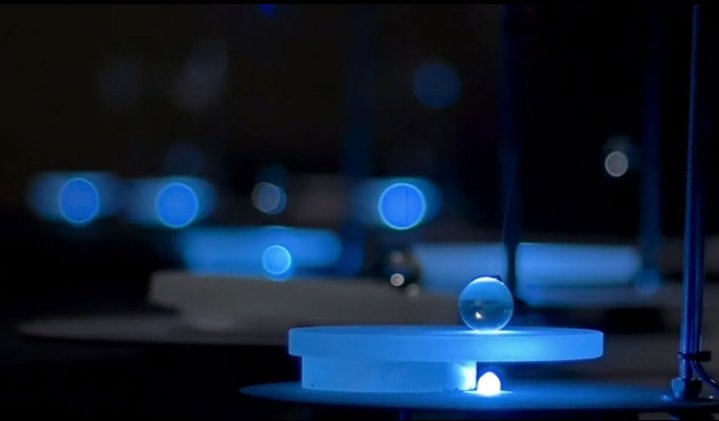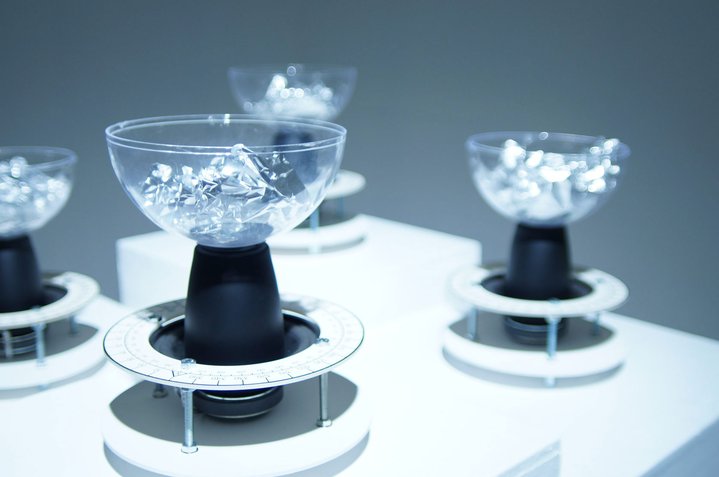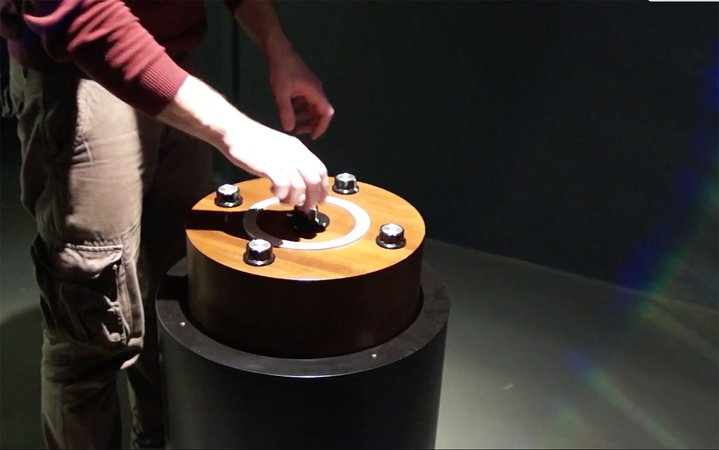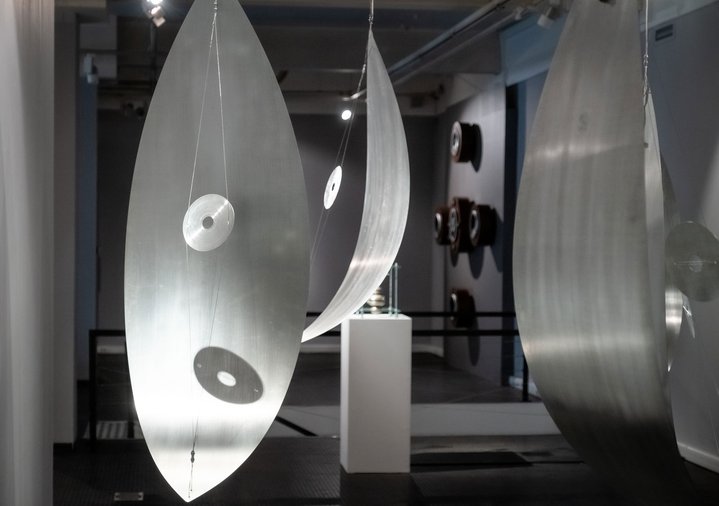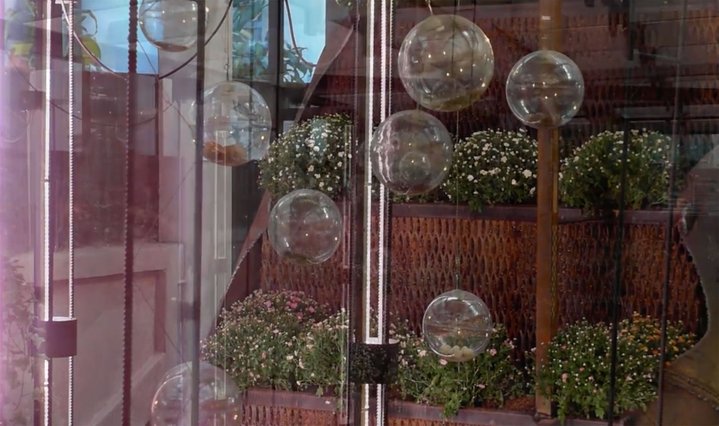Sergey Filatov: master of sound and robots
Russian sound artist Sergey Filatov (b. 1977) invents musical instruments and creates soundscapes, which invite the ‘viewer’ to practice acoustic awareness. His experiments have won him the coveted Russian State ‘Artist of the Year’ Innovation award. Filatov’s solo exhibition is now on display in Khabarovsk, a city in the Far East of Russia.
In a Filatov exhibition, you listen rather than watch. His installations emit the softest of sounds made from the most diverse of materials. The artworks are like instruments that have their own voice, finely tuned by the artist. There is ‘The Garden of Flying Sonors’, with huge steel petals suspended in space. A cluster of motors start to engage, creating vibrations and the petals make noise. Or in ‘Parallel Touch’, when a spectator approaches it, several modules switch on at random, a glass sphere in each moves in a circle touching a quartz disc and this produces sound. The artist explains this work: it is “like a crystal metronome, impartial and relentless, as drops of water it counts periods and trajectories, reflecting natural irregularities in rhythm”. And then there is ‘The Rotator’, whose pulsating rhythm of movement and sound is intended to reflect how our human perception of the flow of time can speed up and slow down.
Filatov has created a complex whole, a polyphonic canvas of sound sculptures and installations. Nothing is left to chance. Filatov explains, “the architecture of each exhibition is carefully worked out with elements being added or cut. I set the level and direction of the sound, and pay particular attention to colour, volume and light in space. I conceive the works as an ensemble, taking into account the characteristics of the space, to create novel interactions and new modes of perception.”
It is for one of these sound exhibitions in Novosibirsk State Art Museum at the end of 2020 and the beginning of 2021, that Sergey Filatov recently won Russia’s main art prize in the field of contemporary art, the ‘Innovation’ award in the ‘Artist of the Year’ category. And, at the beginning of December 2021, he opened the exhibition titled ‘Sonocontour: A Trajectory of Resonances’ (December 4th, 2021 – February 27th, 2022) in Khabarovsk, at the Centre for the Observation and Research of Contemporary Art, ArtServatory.
Technically impressive, Sergey Filatov’s works create a perfect space for contemplation and meditation. He combines his knowledge of physical laws, technical proficiency in mechanics and robotics, with keen observation of nature (inherently unpredictable) and weaves together two different strands of his life and creative path. Filatov’s education unusually spanned both the humanities and the sciences: He graduated from Kuban State University as a graphic artist and studied at the Naval Engineering Institute in St. Petersburg. As an artist, he started out as a painter, interested in abstract surrealism and pure abstraction with an inclination towards suprematism. At the same time, he has an interest in traditional Indian art. Travels to India and Nepal and a deep passion for spiritual practices changed his outlook on life. In India, he was impressed by the improvisational style of playing music and saw in it something similar to spontaneous automatic writing in painting. At some point, he began collecting traditional Indian instruments and even played them himself. Then, came an idea to alter instruments to make music not played by a musician, but by a pre-programmed controller. Finding a way to “control matter through motors” opened up the scope for experimentation. Filatov’s sound sculptures are made from the most unusual of things, in which upcycling has become part of his method. “In some of my works, you can find pieces made from optical, computer and maritime equipment. For example, I was interested in the design of the Soviet Selga radio and the fact that it is tuned to a bandwidth on which there is now no broadcasting. The interplay of clicks and hums in the constant search for a new radio station is evident in the four modules of the ‘Long Wave’ installation. ‘Around Its Own Axis' involves parts used to cool down computers. The hulls of a ship’s gyrosphere (part of the navigation system) became part of sound sculpture ‘RandomTala’. And, in ‘Parallel Touch’, I used quartz disks for telescopes made at a Moscow optical factory.”
One of the most complex and perfect mechanisms created by Filatov is an electric lyre. He invented this new musical instrument, looking for an alternative way to play strings. The sound of the electric lyre is not made with the fingers or bow, as on conventional strings, but by a magnetic field that can be controlled in real time or by an algorithm written in advance. According to musicologists, nothing like this has ever existed before. To make a string vibrate and produce sound, a magnet acts on it, attracting it and releasing it; several magnets are attached to a flywheel, which rotates at different speeds depending on the voltage. This description sounds very technical and dry, but Filatov’s electric lyre envelopes us with sound in kind of clouds of overtones. He first made it in 2017, a modest 5-channel prototype, which was placed in a barochamber at the Sevkabel plant in St. Petersburg. Filatov has further developed this invention and now the latest version of the electric lyre has 26 strings and is a self-contained instrument, which he sometimes displays alone – Filatov sometimes gives concerts on it – or together with the artist’s other installations at exhibitions. There is also a portable version, the two-string Duofluctus, based on the same principle, which is easier to operate and has been played not only by the artist, but by musicians in Russia, France, Sweden, Germany, the USA and elsewhere.
Filatov has performed on the Duofluctus around the world, from the Diaghilev Festival in Perm to the Okayama Art Summit in Japan and the Venice Biennale. In 2019, French composer and sound artist Tarek Atoui invited Sergey Filatov to participate in creating a collaborative installation for the main project at the Arsenal and to show the possibilities of the sound of new instruments during a live performance.
Both in his musical instruments and in his installations, which are reassembled for each exhibition as unique soundscapes, Filatov’s main goal is in creating a kind of subtle sensual perception. He calls this “acoustic awareness”, a way of “experiencing the present moment, paying attention to sound itself, to subtle interactions, and being able to sense the transformations of the overall soundscape in a manifested multidimensional environment”.
In Filatov’s universe of sensitive observation, anything can sound and play. In September 2021, Filatov took part in the 14th Alanika International Festival of Contemporary Art in Vladikavkaz, where his instrument, the Spherion, in the form of a sealed ball with brass plates, was placed in the Terek River. The water in the river spun the blades, playing on the Spherion, with Filatov standing on the bank, transforming the sound of living water. From this unique fusion of man, nature and mechanism, a contemporary symphony was born.
Sonocontour: Trajectory of Resonances
Khabarovsk, Russia
December 4, 2021 – February 27, 2022






